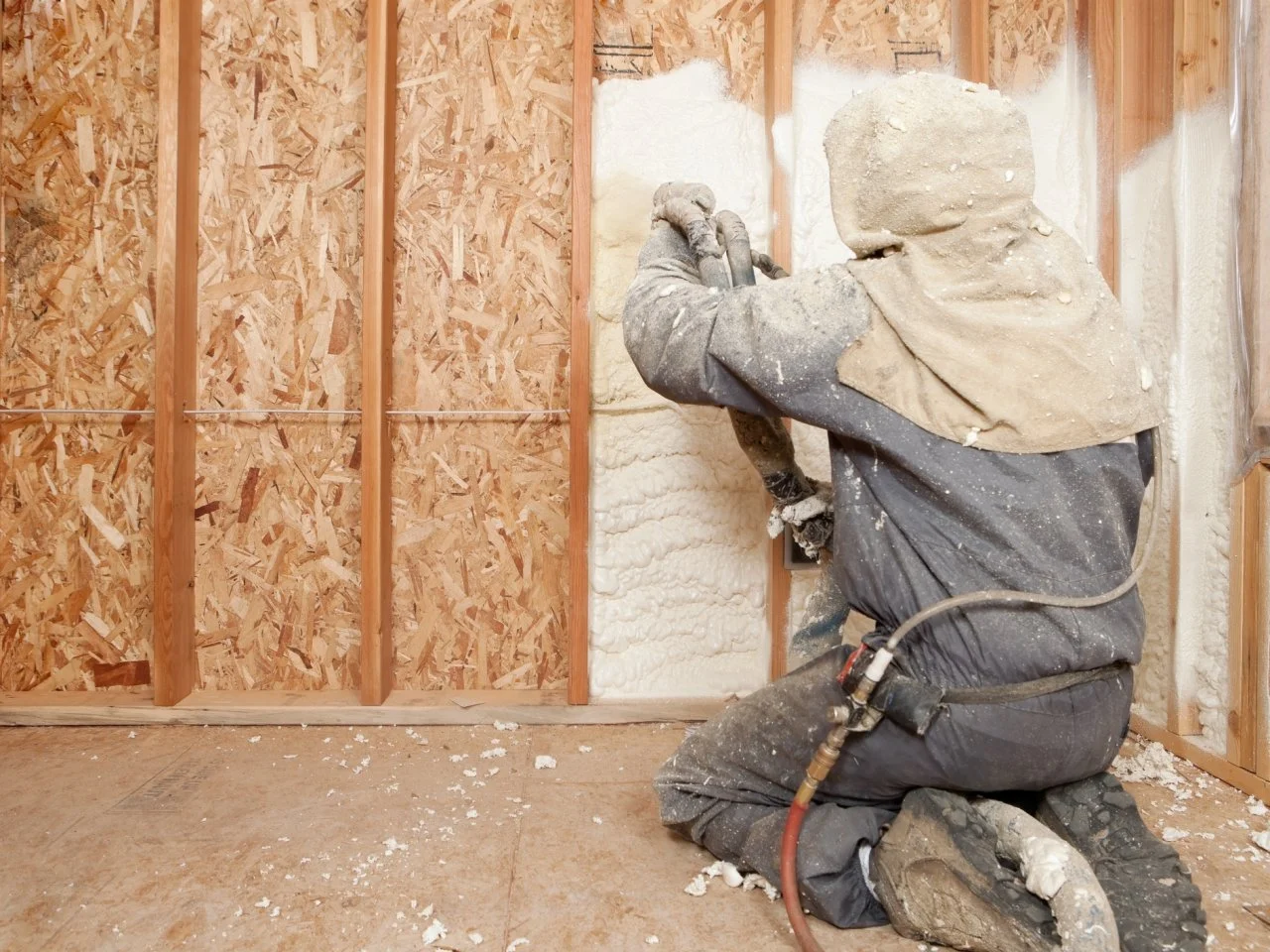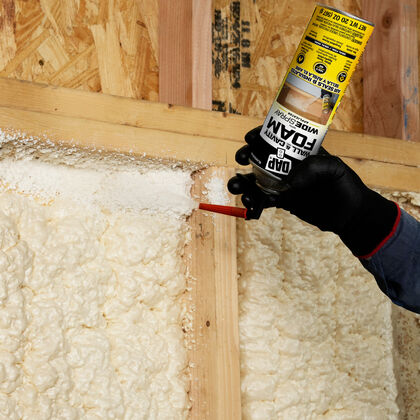Contrasting Spray Foam to Conventional Insulation: Which Is Much better?
Contrasting Spray Foam to Conventional Insulation: Which Is Much better?
Blog Article
Spray Foam: The Ultimate Remedy for Air Sealing and Insulation
Spray foam insulation has arised as a leading remedy for effective air sealing and thermal insulation, supplying an unique combination of residential or commercial properties that establish it in addition to traditional techniques. Its capability to increase and load gaps makes it particularly efficient in stopping air leak, which can dramatically impact energy performance. Comprehending the full extent of its benefits, installment procedures, and contrasts with various other insulation kinds is crucial for making informed decisions. As we explore these facets, the effects for both brand-new buildings and retrofits come to be significantly substantial. What variables should affect your option?
What Is Spray Foam?
Spray foam is a versatile insulation product that integrates the principles of air securing and thermal resistance to improve energy performance in structures. Composed largely of polyurethane or other similar compounds, spray foam is used as a liquid that expands upon call with surfaces, developing a solid, continuous layer of insulation. This one-of-a-kind property enables it to fill voids, cracks, and gaps that standard insulation products may overlook, supplying an exceptional air seal.
There are 2 main kinds of spray foam: open-cell and closed-cell. Open-cell spray foam is lighter and much more adaptable, providing excellent noise absorption and a reduced R-value per inch - Spray Foam. In contrast, closed-cell spray foam is denser, giving a higher R-value, dampness resistance, and added architectural honesty to developing parts
The application process normally involves specific tools, guaranteeing a smooth application that follows various substratums, consisting of concrete, wood, and metal. This adaptability makes spray foam appropriate for both brand-new constructions and retrofitting existing structures. Its capability to develop a closed obstacle dramatically adds to minimizing power consumption and improving indoor air top quality, therefore making it a preferred option among house owners and building contractors alike.
Advantages of Spray Foam Insulation
One of the most significant advantages of spray foam insulation is its outstanding capacity to develop a continual air obstacle, which properly decreases power loss. Unlike traditional insulation materials, spray foam increases to load splits and voids, making certain that air leak is drastically reduced. This characteristic not just boosts power performance however likewise results in lower utility bills with time.
In addition, spray foam insulation gives remarkable thermal resistance, adding to a much more stable interior setting. Its high R-value per inch enables for efficient insulation in confined rooms, making it perfect for attic rooms, wall surfaces, and crawl areas. Additionally, the moisture-resistant homes of spray foam help prevent mold and mildew and mold growth, advertising much healthier living conditions.
An additional vital benefit of spray foam insulation is its sound-dampening top qualities (Spray Foam). It efficiently reduces sound transmission between spaces, creating a quieter and extra comfortable home setting. The sturdiness of spray foam also attracts attention, as it does not sag or resolve in time, keeping its performance throughout its life-span
How Spray Foam Functions
Understanding exactly how spray foam insulation functions is important for valuing its effectiveness in air securing and thermal resistance. Spray foam insulation includes two main components: isocyanate and polyol resin. When these parts are mixed, they go through a chemical response that causes the product to increase rapidly, producing a thick foam that fills cracks, gaps, and tooth cavities.
As the foam increases, it follows surfaces, developing an airtight seal that considerably lowers air infiltration. This characteristic makes spray foam insulation extremely efficient at protecting against drafts and moisture penetration, which can cause power loss and damages with time. Additionally, the closed-cell variant of spray foam provides exceptional thermal resistance because of its stiff framework, properly decreasing warmth transfer.
The unique properties of spray foam permit it to adjust to uneven surface areas, making certain thorough insurance coverage and a smooth obstacle. Because of this, spray foam insulation not only enhances energy efficiency but additionally adds to boosted interior air high quality by decreasing the build-up of toxins and irritants. Eventually, understanding the mechanics behind spray foam emphasizes its duty as a remarkable option for insulation and air sealing in both residential and business applications.
Installation Refine Summary

Prior to installation, the area must be appropriately cleaned and prepped, ensuring that surface areas are devoid of moisture, dust, and particles. This step is vital due to the fact that contaminants can jeopardize bond and general efficiency. As soon as the location is prepared, the application entails blending both parts of the spray foam, which expands upon Homepage contact and fills gaps efficiently.
Trained experts ought to carry out the setup, using specialized equipment to guarantee uniform coverage and optimal density. Safety precautions, consisting of putting on protective gear and ensuring proper air flow, are necessary during this procedure. After application, the foam typically treatments promptly, developing a solid barrier that boosts power effectiveness.
Comparing Spray Foam to Traditional Insulation
When examining insulation alternatives, spray foam insulation sticks out in comparison to traditional products such as fiberglass and cellulose. Among the primary benefits of spray foam is its remarkable air sealing capacities. Unlike fiberglass and cellulose, which can enable air infiltration, spray foam increases upon application, filling up gaps and gaps to develop a closed seal. This results in boosted power efficiency, as less heated or cooled down air leaves the home, leading to lower energy costs.
Additionally, spray foam offers a greater R-value per inch than standard insulation kinds, supplying more efficient thermal resistance in a thinner account. This characteristic find out here now is especially useful precede with restricted cavity depth. Spray foam is immune to dampness and mold development, which can be a significant issue with cellulose and fiberglass, especially in moist environments.
However, spray foam insulation generally carries a higher in advance cost than its conventional counterparts. House owners must evaluate this initial investment against lasting power savings and performance benefits. Eventually, while both insulation kinds offer their objective, spray foam becomes an look what i found advanced option for modern-day insulation demands, specifically in regards to air sealing and thermal performance.

Conclusion
In summary, spray foam insulation stands for a very reliable remedy for attaining ideal air sealing and thermal resistance. Its distinct residential properties, including moisture resistance and sound dampening, make it suitable for numerous applications in both brand-new buildings and retrofitting projects (Spray Foam). The initial prices might be higher contrasted to standard insulation materials, the lasting benefits, such as substantial power savings and boosted indoor air top quality, validate the investment and emphasize its value in modern-day building techniques.
Spray foam insulation has arised as a leading service for effective air securing and thermal insulation, offering a special combination of buildings that set it apart from typical techniques.Spray foam is a functional insulation material that incorporates the principles of air securing and thermal resistance to boost energy performance in buildings.When examining insulation options, spray foam insulation stands out in comparison to conventional materials such as fiberglass and cellulose. Ultimately, while both insulation types offer their objective, spray foam emerges as a much more advanced service for modern-day insulation needs, especially in terms of air securing and thermal efficiency.
In summary, spray foam insulation stands for a highly efficient option for achieving optimal air securing and thermal resistance.
Report this page